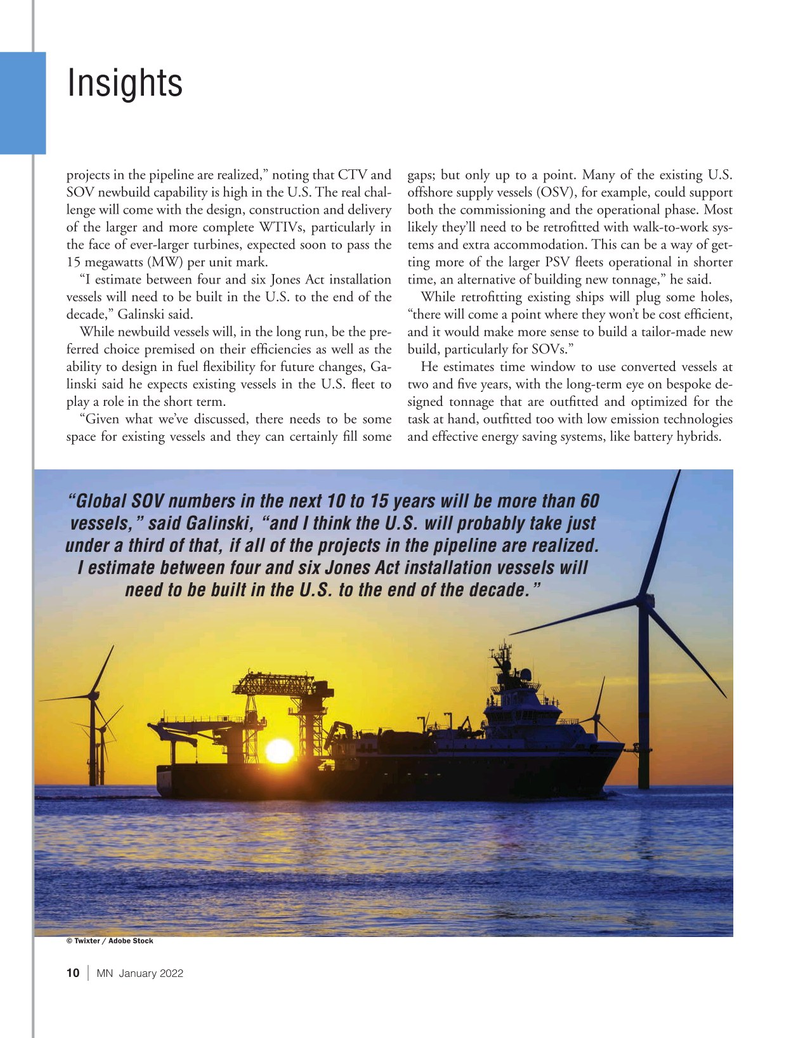
Page 10: of Marine News Magazine (January 2022)
Workboat Propulsion
Read this page in Pdf, Flash or Html5 edition of January 2022 Marine News Magazine
Insights projects in the pipeline are realized,” noting that CTV and gaps; but only up to a point. Many of the existing U.S.
SOV newbuild capability is high in the U.S. The real chal- offshore supply vessels (OSV), for example, could support lenge will come with the design, construction and delivery both the commissioning and the operational phase. Most of the larger and more complete WTIVs, particularly in likely they’ll need to be retro? tted with walk-to-work sys- the face of ever-larger turbines, expected soon to pass the tems and extra accommodation. This can be a way of get- 15 megawatts (MW) per unit mark. ting more of the larger PSV ? eets operational in shorter “I estimate between four and six Jones Act installation time, an alternative of building new tonnage,” he said. vessels will need to be built in the U.S. to the end of the While retro? tting existing ships will plug some holes, decade,” Galinski said. “there will come a point where they won’t be cost ef? cient,
While newbuild vessels will, in the long run, be the pre- and it would make more sense to build a tailor-made new ferred choice premised on their ef? ciencies as well as the build, particularly for SOVs.” ability to design in fuel ? exibility for future changes, Ga- He estimates time window to use converted vessels at linski said he expects existing vessels in the U.S. ? eet to two and ? ve years, with the long-term eye on bespoke de- play a role in the short term. signed tonnage that are out? tted and optimized for the “Given what we’ve discussed, there needs to be some task at hand, out? tted too with low emission technologies space for existing vessels and they can certainly ? ll some and effective energy saving systems, like battery hybrids.
“Global SOV numbers in the next 10 to 15 years will be more than 60 vessels,” said Galinski, “and I think the U.S. will probably take just under a third of that, if all of the projects in the pipeline are realized.
I estimate between four and six Jones Act installation vessels will need to be built in the U.S. to the end of the decade.” © Twixter / Adobe Stock 10 | MN January 2022

 9
9

 11
11
